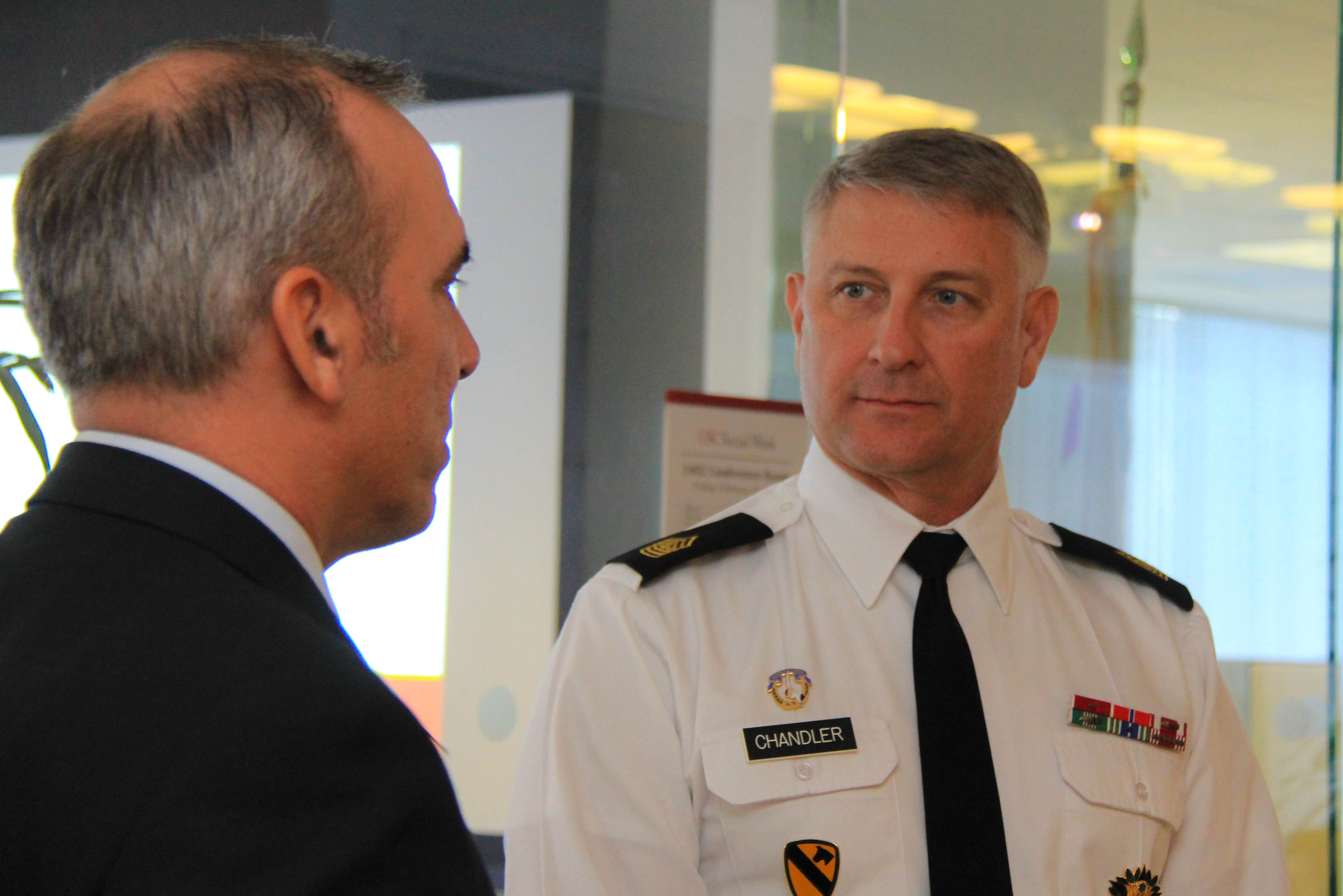When the Army’s highest-ranking noncommissioned officer responsible for the well-being of more than 80 percent of the force shares his personal story with behavioral health care, it is a large step towards destigmatization.
“I have overcome a lot of the challenges that military life brings,” said Sgt. Maj. of the Army Raymond Chandler, who visited the Center for Innovation and Research on Veterans & Military Families last week to discuss how to better assist transitioning soldiers and their families.
“Today, I’m a better person, father and husband—and that makes me a better soldier.”
Changing the military perception of seeking help of any kind, but especially mental health, remains a challenge. CIR is dedicated to reducing the stigma by creating a military culturally competent behavioral health workforce through research, training and technology.
Often, it is leadership that sets the perception.
‘That’s Actually a Strength’
In 2004, while in Baghdad, a 12mm rocket reached Chandler’s room, bringing him face-to-face with his own mortality. It took five years for him to seek help.
During an interview for his current position, Chandler was asked if there was anything in his background that could be embarrassing to the Army. When he answered that he’d been in behavioral health care, the response he heard was both surprising and welcoming: No, that’s actually a strength.
“The only thing we have to fear is our own inhibition to get help,” he said.
During his visit, Chandler received a demonstration of the center’s innovative technology, including the Virtual Patient and MILES, virtual avatars who mimic military experiences and are used to enhance military culture skills for behavioral health professionals and students.
However, it was the simplest technology—video clips that are used to assess clinical skills—that resonated the most.
Chandler saw how the videos could be used for other scenarios so leadership can connect with soldiers.
“We wrestle with that—how do you get to know your soldiers,” he said. “You ask the wrong question, and they just shut down.”
A Collective Effort
He also met with members of the Los Angeles Veterans Collaborative representing different sectors (i.e., housing, employment and families) to discuss how the Army can be a partner in some of their efforts.
Chandler said that the Army is not well-equipped to tackle specific needs in communities, but that combining its resources with the tools and strengths of others will yield better results.
“I think what you’re doing here is amazing. It’s great to know that researchers and professionals and general members of the community are working together and trying to help veterans, soldiers and their families,” he said.
However, as Chandler pointed out, there are some areas beyond his influence.
Some of the biggest local concerns voiced were in regards to National Guard members, who unlike many of their military counterparts, do not return home to the same system of support that other active duty service members receive.
“In order to make it right, you need to change the law and your coalition can influence that,” he said.
PHOTO: Sgt. Maj. of the Army Raymond F. Chandler III, discusses efforts to assist Service Members and Families transitioning from a life of Service back to civilian life with University of Southern California School of Social Work Director and Clinical Associate Professor Anthony Hassan, in Los Angeles, Calif., Feb 21, 2014. Photo by Sgt. 1st Class Walter Talens.








